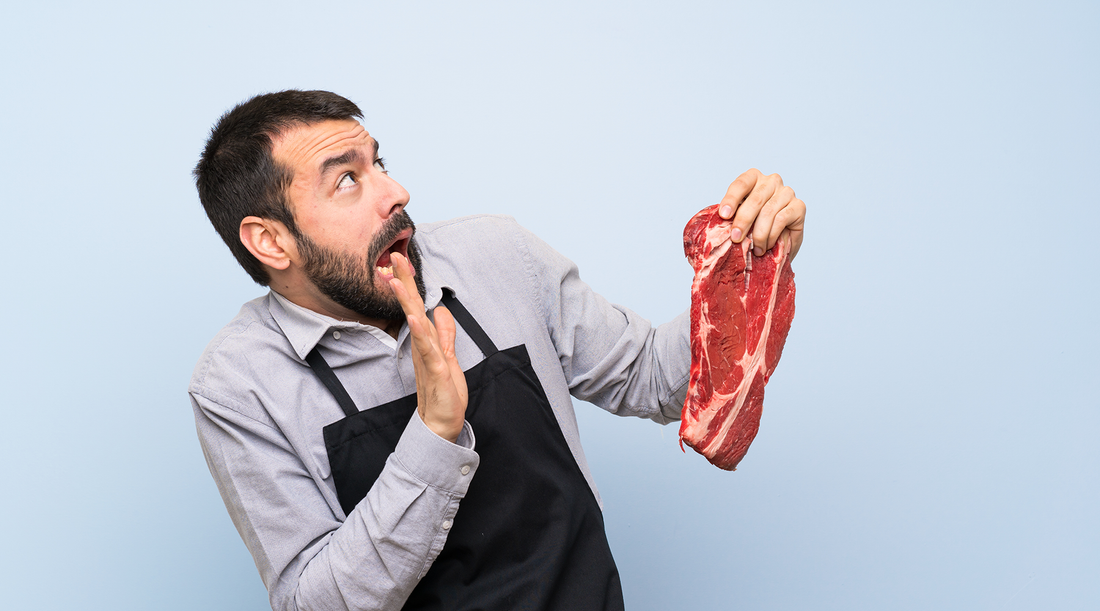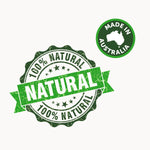
Pet Raw Feeding Risks And Myths Busted
Did you know a small percentage of dogs and cats can harbour salmonella and be completely healthy?
Did you know that dry foods can also contain salmonella?
Did you know you're more likely to contract salmonella through dry foods and treats than raw food?
Did you know that dry dog food can contain aflatoxins which stems from grains and can be fatal to your dog or cat?
These are just some of the raw feeding myths we want to debunk.
Dogs and cats process foods very differently from humans and it's important to understand how these myths proliferated and why they are not based on logic or what the sciences says.
What Are The Dangers of Raw Feeding For Pets?
If you're reading this, you've probably heard some of the raw feeding recommendations from breeders, pet groups, and trainers. There's certainly a strong movement behind fresh feeding that's only growing bigger.
However, in some cases, you'll also hear counter-arguments from commercial dog food companies and their affiliated vets. They still form a very strong voice maintaining the status quo that we should only be feeding our pets biscuits. These companies are large and well-funded, so it can often be confusing to try to separate fact from fiction and PR babble.
It's important to keep a pragmatic and balanced approach to raw feeding, where you fully understand both the benefits and risks. This requires a scientific, fact-based understanding of the materials and a strong grounding in logic.
Is Raw Feeding Better For Pets?
For decades now, it's common knowledge among human health professionals that eating a high proportion of fresh foods has well-established health benefits. Additionally, it's well known that significantly lowering the intake of highly processed foods and preservatives from our diets can prevent many chronic illnesses and allergies.
Why then are we told by commercial dry food manufacturers and affiliated vets that we should feed our pets highly processed, nutritionally poor foods that are loaded with preservatives and synthetic vitamins?
We as humans are told that "fresh is best", yet for some reason, fresh food is sometimes accompanied by dire warnings for our pets. It certainly defies logic.
You just need to look at the excitement of the hundreds of thousands of pet owners who have switched to raw feeding to get a better grasp of why it's gaining so much popularity. If you read the reviews all over the web, the pet owners speak for themselves about the many benefits of raw feeding.
Why Feed Dry Food?
The commercial complexity and cost of delivering raw food at scale to pets has limited the scope and interest of the biggest players in the game, like Nestlé, Mars and Hill's. In short, it's easier and cheaper to make dry food.
You don't really need to worry too much about the quality of the ingredients when you make dry food. You can just grind up the by-product from the human food industry, irradiate it, bleach it, colour it, then desiccate it into homogeneous shapes to get a high-margin product with a long shelf life.
Further, to balance these diets according to specifications they design themselves, they can just mix in synthetic powdered vitamins and minerals in a manufacturing environment. Add in some powerful preservatives at the end and you have a product that's cheap to make, light to transport, and stores for a long time. It's a commercial bonanza.
Raw Feeding Risks And Myths
In this section, we'll discuss some of the genuine risks of feeding raw and how you can manage them. Additionally, we'll discuss some of the fear-mongering in the commercial pet food industry that can be quite easily debunked.
Hopefully, you'll leave with a more informed understanding of raw feeding and learn to balance threats from facts.
Is Raw Pet Food High In Bacteria?
All food contains bacteria, this is a fact. Dry food, biscuits, treats, and human foods also contain trace amounts of bacteria. Our digestive systems are designed to eliminate and control bad bacteria while maintaining good bacteria which aids digestion. It's when these bacterial levels are heavily imbalanced that foods become dangerous.
Dogs and cats as scavengers and carnivores have powerful saliva and stomach acids to help them digest raw meat. Their teeth are designed to tear food, not chew it, so their intestinal tract is short and evolved to process food primarily in the stomach.
If you get your food from a reputable company and observe proper safe food handling techniques, then bacterial content will be at safe levels. Millions of pets are fed a solely raw diet and unsurprisingly, there's no health epidemic related to this practice.
In short, don't feed your pets rotten meat and they'll be fine.
Is Raw Pet Food Nutritionally Deficient?
That depends on the food. If you're aware of what you're buying and how you feed it according to your plan, then raw food is perfectly complete and balanced.
For example, you may want to feed according to an AAFCO nutritional ratio, which is a standards body that determines the minimum requirements for all life stages. Alternatively, you may want to follow a BARF model with ratios of muscle meat, offal and bone.
Generally, we recommend dogs start on an AAFCO recipe like Beef Complete or Roo Complete and cats start on a balanced recipe like Chicken Basics for cats to suit all life stages. These recipes are great for beginners who want to make sure they're feeding a nutritionally complete and balanced meal plan that isn't deficient in any nutrients that are essential to their good health.
A major benefit of these recipes is that their balance is achieved using only natural ingredients and not by adding synthetic vitamins or minerals. All of our fresh produce is carefully curated to offer the right nutritional profile, without any artificial additives or preservatives.
Are Bones Dangerous?
The correct answer is "it depends". Anything that your dog chews and breaks off can present a choking or obstruction hazard. It's why we recommend careful supervision when feeding bones. Careful selection of the bone type and size is important in this case, as is observation of your pet's behaviour when eating those bones. This is especially true for puppies and kittens, or aggressive chewers.
We have an extensive guide for how to feed bones that's worth a read. If you supervise your pets and observe their chewing behaviour to ensure it's careful, you won't have issues.
Note that for pets that are fed proper AAFCO and BARF ratio recipes, you shouldn't need to supplement with bones. These recipes should already contain the right amount of calcium content for their needs.
Many pet owners find bones to be a perfectly natural way to help their pets clean their own teeth and provide mental enrichment. One or two meaty bones per week should be plenty in these cases. Otherwise, a toothbrush is also a great way to clean their teeth if you prefer not to feed bones.
In Conclusion
If you follow basic food handling procedures, a fresh diet is by far the best choice for the average pet's health. It doesn't take mental gymnastics to have a logical, scientific approach to a healthy diet. Just some common sense concepts.
- Fresh food is healthier than processed food.
- Avoid artificial additives.
- Feed a complete and balanced nutritional profile.
- Observe and supervise your pets.
- Keep your food fresh and follow shelf life recommendations.
- Keep your kitchen and feeding utensils clean.
- Wash your hands, preparation areas, and pet food bowl with warm soapy water before and after serving them their food.
- Don’t allow infants or young children near pet feeding stations (salmonella is contracted through ingestion of contaminated food, not by touching it. However, young children being children, often put anything that looks good at that age in their mouths, so always supervise!)
You can always reach out to our friendly team if you have any questions or concerns. While we don't provide medical advice online, we're happy to provide you with nutritional guidance to help you choose the best meal plans for your loved ones.
Contact us if you need help.
